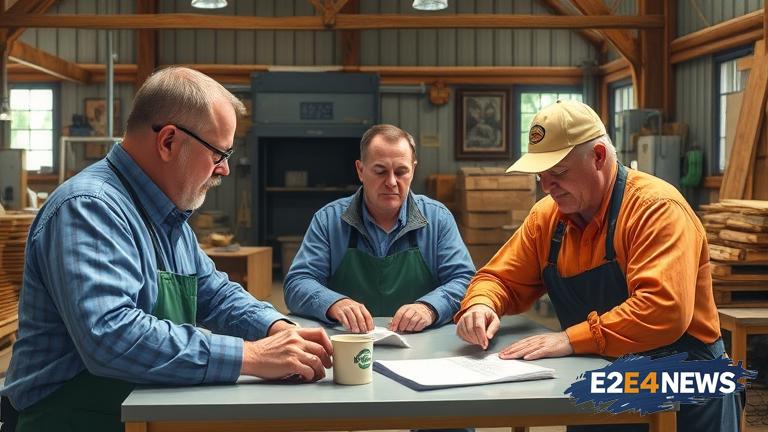A recent gathering of business leaders shed light on the importance of manufacturing in rural areas, emphasizing its potential to stimulate economic growth and create new job opportunities. The discussion, which brought together industry experts and stakeholders, aimed to explore the challenges and benefits associated with establishing manufacturing facilities in rural regions. According to the participants, rural areas offer a unique set of advantages, including lower operational costs, access to natural resources, and a skilled workforce. However, they also acknowledged the need for infrastructure development, investment in technology, and workforce training to support the growth of manufacturing in these areas. The leaders emphasized the importance of public-private partnerships in driving economic development and creating an environment conducive to business growth. They also highlighted the role of government policies and incentives in encouraging companies to set up operations in rural areas. Furthermore, the discussion touched on the potential of emerging technologies, such as artificial intelligence and robotics, to enhance manufacturing efficiency and competitiveness. The leaders noted that the adoption of these technologies could help rural manufacturers to stay ahead of the curve and capitalize on new market opportunities. In addition, they stressed the need for a skilled and adaptable workforce, capable of navigating the changing demands of the manufacturing sector. To address this challenge, the leaders proposed initiatives such as vocational training programs, apprenticeships, and education partnerships. They also emphasized the importance of community engagement and outreach, recognizing that the success of manufacturing projects in rural areas depends on the support and participation of local residents. The discussion concluded with a call to action, urging business leaders, policymakers, and community stakeholders to work together to unlock the potential of manufacturing in rural areas. By leveraging the advantages of rural locations and addressing the associated challenges, manufacturers can create new opportunities for growth, job creation, and economic development. The gathering of business leaders served as a reminder that the future of manufacturing is not limited to urban centers, but can thrive in rural areas with the right combination of investment, innovation, and community support. As the manufacturing sector continues to evolve, it is likely that rural areas will play an increasingly important role in driving economic growth and development. The leaders’ emphasis on collaboration, innovation, and workforce development is expected to resonate with industry stakeholders and policymakers, inspiring new initiatives and investments in rural manufacturing. In the coming years, it will be important to monitor the progress of manufacturing projects in rural areas, assessing their impact on local economies and communities. The success of these initiatives will depend on the ability of business leaders, policymakers, and community stakeholders to work together, leveraging the advantages of rural locations and addressing the associated challenges. By doing so, they can create a brighter future for rural economies and contribute to the growth and development of the manufacturing sector as a whole. The discussion also highlighted the importance of sustainability and environmental responsibility in manufacturing, recognizing that rural areas are often characterized by unique environmental challenges and opportunities. The leaders emphasized the need for manufacturers to adopt environmentally friendly practices, reduce their carbon footprint, and promote sustainable development in rural areas. This approach is expected to not only benefit the environment but also enhance the reputation of manufacturers and contribute to the long-term viability of their operations. In conclusion, the gathering of business leaders provided a valuable platform for discussing the potential of manufacturing in rural areas, highlighting the opportunities and challenges associated with this trend. As the manufacturing sector continues to evolve, it is likely that rural areas will play an increasingly important role in driving economic growth and development, creating new opportunities for job creation, innovation, and community engagement.
